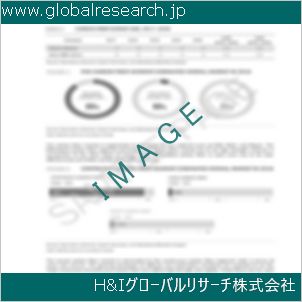Table of Contents
1 Industry Overview of Arsenic
1.1 Definition and Specifications of Arsenic
1.1.1 Definition of Arsenic
1.1.2 Specifications of Arsenic
1.2 Classification of Arsenic
1.3 Applications of Arsenic
1.3.1 Nuclear Application
1.3.2 Non-Nuclear Application
1.4 Industry Chain Structure of Arsenic
1.5 Industry Overview and Major Regions Status of Arsenic
1.5.1 Industry Overview of Arsenic
1.5.2 Global Major Regions Status of Arsenic
1.6 Industry Policy Analysis of Arsenic
1.7 Industry News Analysis of Arsenic
2 Manufacturing Cost Structure Analysis of Arsenic
2.1 Raw Material Suppliers and Price Analysis of Arsenic
2.2 Equipment Suppliers and Price Analysis of Arsenic
2.3 Labor Cost Analysis of Arsenic
2.4 Other Costs Analysis of Arsenic
2.5 Manufacturing Cost Structure Analysis of Arsenic
2.6 Manufacturing Process Analysis of Arsenic
3 Technical Data and Manufacturing Plants Analysis of Arsenic
3.1 Capacity and Commercial Production Date of Global Arsenic Major Manufacturers in 2023
3.2 Manufacturing Plants Distribution of Global Arsenic Major Manufacturers in 2023
3.3 R&D Status and Technology Source of Global Arsenic Major Manufacturers in 2023
3.4 Raw Materials Sources Analysis of Global Arsenic Major Manufacturers in 2023
4 Capacity, Production and Revenue Analysis of Arsenic by Regions, Types and Manufacturers
4.1 Global Capacity, Production and Revenue of Arsenic by Regions 2019-2024
4.2 Global and Major Regions Capacity, Production, Revenue and Growth Rate of Arsenic 2019-2024
4.3 Global Capacity, Production and Revenue of Arsenic by Types 2019-2024
4.4 Global Capacity, Production and Revenue of Arsenic by Manufacturers 2019-2024
5 Price, Cost, Gross and Gross Margin Analysis of Arsenic by Regions, Types and Manufacturers
5.1 Price, Cost, Gross and Gross Margin Analysis of Arsenic by Regions 2019-2024
5.2 Price, Cost, Gross and Gross Margin Analysis of Arsenic by Types 2019-2024
5.3 Price, Cost, Gross and Gross Margin Analysis of Arsenic by Manufacturers 2019-2024
6 Consumption Volume, Consumption Value and Sale Price Analysis of Arsenic by Regions, Types and Applications
6.1 Global Consumption Volume and Consumption Value of Arsenic by Regions 2019-2024
6.2 Global and Major Regions Consumption Volume, Consumption Value and Growth Rate of Arsenic 2019-2024
6.3 Global Consumption Volume and Consumption Value of Arsenic by Types 2019-2024
6.4 Global Consumption Volume and Consumption Value of Arsenic by Applications 2019-2024
6.5 Sale Price of Arsenic by Regions 2019-2024
6.6 Sale Price of Arsenic by Types 2019-2024
6.7 Sale Price of Arsenic by Applications 2019-2024
6.8 Market Share Analysis of Arsenic by Different Sale Price Levels
7 Supply, Import, Export and Consumption Analysis of Arsenic
7.1 Supply, Consumption and Gap of Arsenic 2019-2024
7.2 Global Capacity, Production, Price, Cost, Revenue, Supply, Import, Export and Consumption of Arsenic 2019-2024
7.3 USA Capacity, Production, Price, Cost, Revenue, Supply, Import, Export and Consumption of Arsenic 2019-2024
7.4 EU Capacity, Production, Price, Cost, Revenue, Supply, Import, Export and Consumption of Arsenic 2019-2024
7.5 China Capacity, Production, Price, Cost, Revenue, Supply, Import, Export and Consumption of Arsenic 2019-2024
7.6 Japan Capacity, Production, Price, Cost, Revenue, Supply, Import, Export and Consumption of Arsenic 2019-2024
8 Major Manufacturers Analysis of Arsenic
8.1 Manufacturer One
8.1.1 Company Profile
8.1.2 Product Picture and Specifications
8.1.2.1 Type I
8.1.2.2 Type II
8.1.2.3 Type III
8.1.3 Capacity, Production, Price, Cost, Gross and Revenue
8.1.4 Contact Information
8.2 Manufacturer Two
8.2.1 Company Profile
8.2.2 Product Picture and Specifications
8.2.2.1 Type I
8.2.2.2 Type II
8.2.2.3 Type III
8.2.3 Capacity, Production, Price, Cost, Gross and Revenue
8.2.4 Contact Information
8.3 Manufacturer Three
8.3.1 Company Profile
8.3.2 Product Picture and Specifications
8.3.2.1 Type I
8.3.2.2 Type II
8.3.2.3 Type III
8.3.3 Capacity, Production, Price, Cost, Gross and Revenue
8.3.4 Contact Information
8.4 Manufacturer Four
8.4.1 Company Profile
8.4.2 Product Picture and Specifications
8.4.2.1 Type I
8.4.2.2 Type II
8.4.2.3 Type III
8.4.3 Capacity, Production, Price, Cost, Gross and Revenue
8.4.4 Contact Information
8.5 Manufacturer Five
8.5.1 Company Profile
8.5.2 Product Picture and Specifications
8.5.2.1 Type I
8.5.2.2 Type II
8.5.2.3 Type III
8.5.3 Capacity, Production, Price, Cost, Gross and Revenue
8.5.4 Contact Information
…
9 Marketing Trader or Distributor Analysis of Arsenic
9.1 Marketing Channels Status of Arsenic
9.2 Traders or Distributors with Contact Information of Arsenic by Regions
9.3 Ex-work Price, Channel Price and End Buyer Price Analysis of Arsenic
9.4 Regional Import, Export and Trade Analysis of Arsenic
10 Industry Chain Analysis of Arsenic
10.1 Upstream Major Raw Materials Suppliers Analysis of Arsenic
10.1.1 Major Raw Materials Suppliers with Contact Information Analysis of Arsenic
10.1.2 Major Raw Materials Suppliers with Supply Volume Analysis of Arsenic by Regions
10.2 Upstream Major Equipment Suppliers Analysis of Arsenic
10.2.1 Major Equipment Suppliers with Contact Information Analysis of Arsenic
10.2.2 Major Equipment Suppliers with Product Pictures Analysis of Arsenic by Regions
10.3 Downstream Major Consumers Analysis of Arsenic
10.3.1 Major Consumers with Contact Information Analysis of Arsenic
10.3.2 Major Consumers with Consumption Volume Analysis of Arsenic by Regions
10.4 Supply Chain Relationship Analysis of Arsenic
11 Development Trend of Analysis of Arsenic
11.1 Capacity, Production and Revenue Forecast of Arsenic by Regions and Types
11.1.1 Global Capacity, Production and Revenue of Arsenic by Regions 2024-2029
11.1.2 Global and Major Regions Capacity, Production, Revenue and Growth Rate of Arsenic 2024-2029
11.1.3 Global Capacity, Production and Revenue of Arsenic by Types 2024-2029
11.2 Consumption Volume and Consumption Value Forecast of Arsenic by Regions, Types and Applications
11.2.1 Global Consumption Volume and Consumption Value of Arsenic by Regions 2024-2029
11.2.2 Global and Major Regions Consumption Volume, Consumption Value and Growth Rate of Arsenic 2024-2029
11.2.3 Global Consumption Volume and Consumption Value of Arsenic by Types 2024-2029
11.2.4 Global Consumption Volume and Consumption Value of Arsenic by Applications 2024-2029
11.3 Supply, Import, Export and Consumption Forecast of Arsenic
11.3.1 Supply, Consumption and Gap of Arsenic 2024-2029
11.3.2 Global Capacity, Production, Price, Cost, Revenue, Supply, Import, Export and Consumption of Arsenic 2024-2029
11.3.3 USA Capacity, Production, Price, Cost, Revenue, Supply, Import, Export and Consumption of Arsenic 2024-2029
11.3.4 EU Capacity, Production, Price, Cost, Revenue, Supply, Import, Export and Consumption of Arsenic 2024-2029
11.3.5 China Capacity, Production, Price, Cost, Revenue, Supply, Import, Export and Consumption of Arsenic 2024-2029
11.3.6 Japan Capacity, Production, Price, Cost, Revenue, Supply, Import, Export and Consumption of Arsenic 2024-2029
12 New Project Investment Feasibility Analysis of Arsenic
12.1 New Project SWOT Analysis of Arsenic
12.2 New Project Investment Feasibility Analysis of Arsenic
13 Conclusion of the Global Arsenic (CAS 7440-38-2) Industry 2024 Market Research Report
| ※参考情報 ヒ素(Arsenic)とは、元素記号As、原子番号33の非金属元素であり、化学的性質において金属と非金属の中間的な特性を持つ物質です。ヒ素は自然界に広く分布しており、鉱石や鉱山の副産物として見られます。また、土壌や水中にも微量存在しており、特に有機物と結びついていることが多いです。ヒ素は古代から知られており、さまざまな文化で神話や医学、工芸に用いられてきました。 ヒ素の特徴としては、金属光沢を持つ灰色の固体、または無色のガスとして存在することが挙げられます。常温では固体であり、融点が817℃、沸点が614℃です。水にはほとんど溶けませんが、酸やアルカリには溶解します。また、ヒ素は生物に対して毒性があり、非常に危険な物質として知られています。特に、無機ヒ素化合物は強い毒性を持ち、長期的な曝露は健康に深刻な影響を及ぼすことがあります。 ヒ素にはいくつかの種類があり、主に無機ヒ素と有機ヒ素に分類されます。無機ヒ素には、酸化物(例:ヒ素酸As2O5や三酸化二ヒ素As2O3)や塩(例:亜ヒ素酸ナトリウムNaAsO2)が存在します。これらの無機ヒ素化合物は、農業用殺菌剤や農薬、工業用薬品に利用されます。一方、有機ヒ素は有機化合物として存在し、主に農薬や防腐剤として使用されています。有機ヒ素化合物は比較的低い毒性を持つことが多いですが、質によっては危険性を持つものもあります。 ヒ素の主な用途は多岐にわたります。古くからヒ素は殺虫剤や防腐剤として利用されてきましたが、最近では半導体材料や光電子デバイスの製造にも使用されています。特に、ヒ素はリンと共に化合物が形成されることから、低温ポリシリコンやヒ素化ガリウム(GaAs)といった半導体材料の製造において重要な役割を果たしており、通信機器や太陽電池などに利用されています。 また、ヒ素は金属の合金としても重要で、特に鉛や銅の合金に微量添加されることで強度や耐久性を向上させる役割を果たします。さらに、一部の化合物は医薬品としても応用されています。たとえば、アントリポス(抗がん剤)の成分として、ヒ素が用いられたケースもあります。 ヒ素の関連技術としては、無機ヒ素の分析方法や除去技術が重要です。水質検査では、ヒ素の濃度を測定するために様々な分析技術が開発されています。これには、主に原子吸光分析法やフューレンス法などが用いられます。これらの技術は、環境中のヒ素を特定し、その濃度を測定するために非常に重要です。 また、ヒ素を除去する技術としては、化学的沈殿、吸着、膜ろ過技術などが挙げられます。化学的沈殿は、特定の薬品を添加してヒ素を沈殿させる方法ですが、特に水質の改善に用いられます。吸着方法は、活性炭や特定の吸着剤を使用して水中のヒ素を取り除くもので、多くの家庭用浄水器でも活用されています。膜ろ過技術は、高い精度でヒ素を除去することができるため、飲料水処理においても用いられています。 ヒ素の取り扱いには注意が必要であり、適切な安全対策を講じることが重要です。特に、ヒ素を含む材料を扱う際には、マスクや手袋を着用し、作業環境を適切に管理することが必要です。また、長期的なヒ素への曝露を避けるために、定期的な健康診断や監視が求められます。 ヒ素は、その特異な性質から様々な分野で利用されていますが、それに伴うリスクも存在しますので、安全性を確保しながらの研究と利用が今後も求められるでしょう。ヒ素に関する研究が進むことで、より安全で効果的な利用方法が明らかになり、我々の生活に役立てられることを願っています。 |
❖ 免責事項 ❖
http://www.globalresearch.jp/disclaimer












